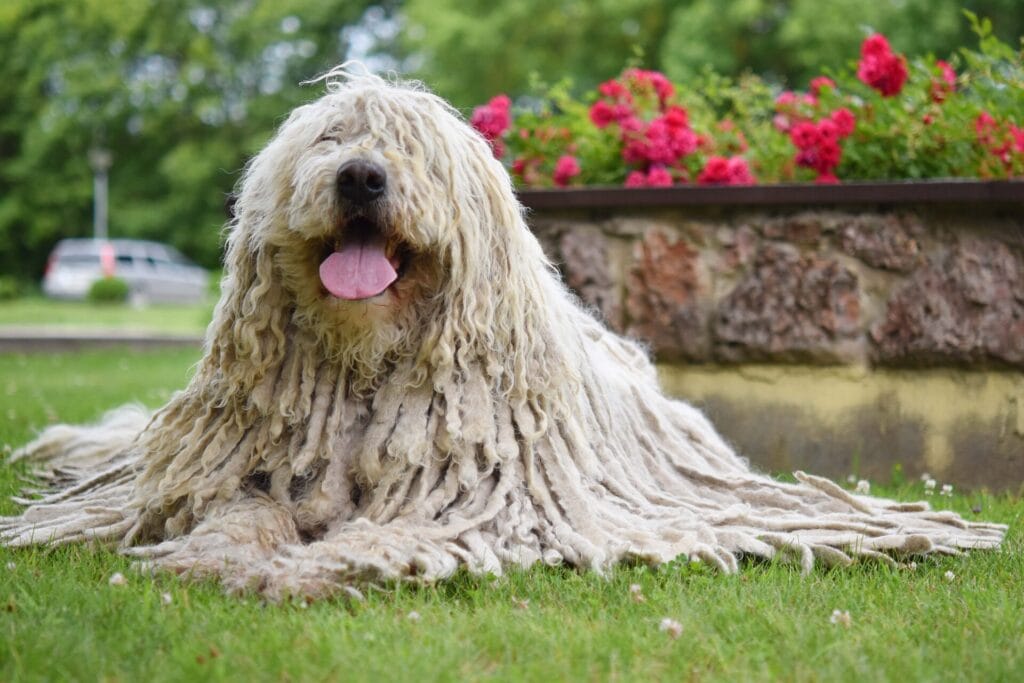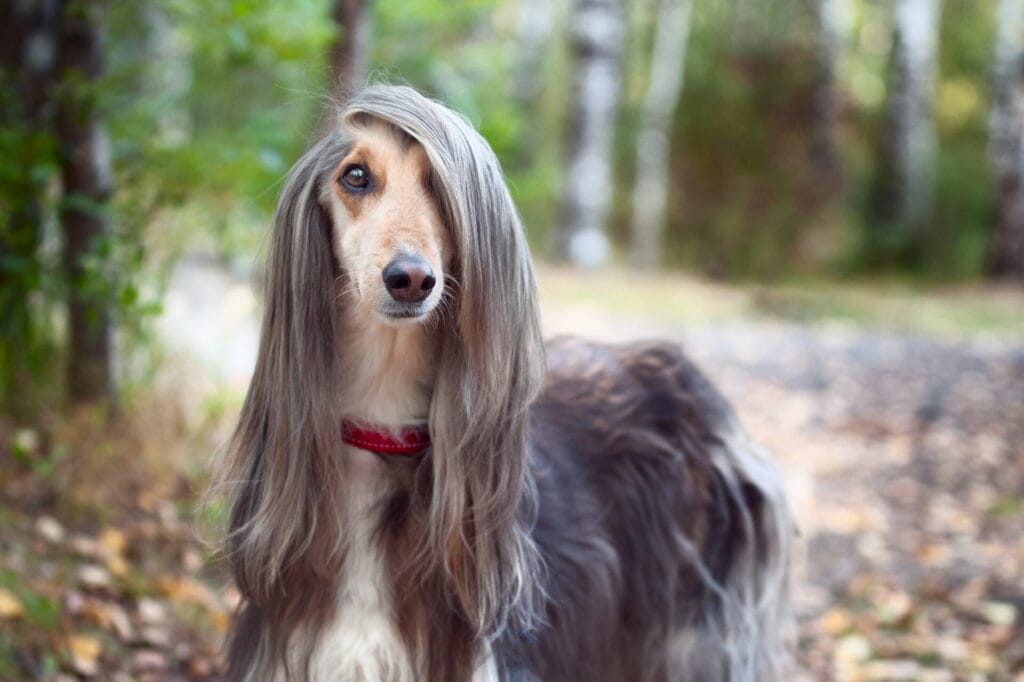Grooming requirements can vary widely among different dog breeds, and what makes a breed “hard” to groom can depend on factors like coat type, size, temperament, and specific grooming needs. That being said, some breeds are often considered more challenging to groom due to factors such as their dense or intricate coats, their sensitivity, or their tendency to be anxious during grooming sessions. Here are five breeds that are often mentioned as being more challenging to groom:
Afghan Hound
The Afghan Hound has a long, silky coat that requires regular brushing and special attention to prevent tangles and mats. Their coat can be sensitive, and they may be more prone to skin issues if not groomed properly.
Poodles and Doodles
Standard Poodles have dense, curly coats that require regular grooming to prevent matting. They also often require professional grooming, which can be more time-consuming and expensive.
Doodles often inherit a mix of their parent breeds’ coat types. For example, a Labradoodle may have a combination of the Labrador’s short, dense coat and the Poodle’s curly, dense coat. This can make it more difficult to predict how the coat will grow and require different grooming techniques.
Doodles tend to have dense, curly, or wavy coats that are prone to matting. The tight curls can trap debris, and if not properly maintained, the mats can become painful and lead to skin issues.
Komondor
The Komondor has a distinctive corded coat that requires special care to develop and maintain its unique appearance. Keeping their cords clean and preventing matting can be a time-consuming task.

Bichon Frise
Bichon Frises have a fluffy, curly coat that can become tangled and matted if not properly cared for. Regular brushing and professional grooming are typically necessary.
Shih Tzu
Shih Tzus have long, flowing coats that require frequent brushing and regular grooming. They are also prone to tear staining, which requires additional care around the eyes.
Maintaining the grooming needs of these breeds can be a labor-intensive process, but with proper care and attention, their coats can remain healthy and beautiful.




















